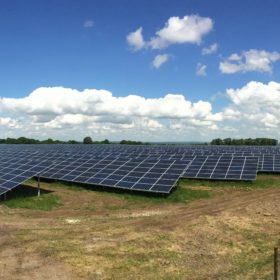UK: The smart home in focus as startups drive innovation
The concept of the smart home is emerging as a hot topic in the debate regarding the U.K.’s energy future. At the EcoBuild last week, a special session entitled “Smart and Efficient Use of Future Energy” depicted accurately the central role solar PV plays in the transition to the smart era. It also highlighted how innovation leadership is coming from small, bottom-up firms as utilities and policy-makers struggle to adapt and embrace the new technologies.
UK Foresight Solar Fund to raise up to £100 million
The fund plans to acquire two PV plants with a combined capacity of 74 MW and expects to continue acquisitions of plants below and above 5 MW following the introduction of next year’s CfD scheme.
UK: £300 million in subsidy support for renewables
The increased budget will be split between the various renewable energy technologies bidding for subsidy support. The country’s Solar Trade Association says the government’s decisions “represent serious tragic mistakes in energy policy.”
Independence will not derail Scotland’s stellar renewables success
pv magazine’s Ilias Tsagas argues that should Scotland’s population vote today in favor of independence, this will not hurt its renewable energy sector but might give it a further boost.
Foresight fund secures £100 million to purchase UK solar farms
The solar asset manager expects to double its operational capacity in the U.K. in the next twelve months to some 200 MW. It’s latest acquisition includes the 37 MW Kencot, Oxfordshire, PV farm.
UK solar capacity falls as debate over future of PV intensifies
While small FIT-supported projects have driven the British photovoltaic market, 2013 has seen an increasing amount of large-scale capacity as the government weighs green tax reductions while embracing nuclear power.
Investment group plans £200 million UK solar investment
The Foresight Solar Fund would finance eight U.K. ground mount plants with the profits from a planned London IPO. A partner for the fund says solar offers a more attractive investment in the UK than wind.
Solar debate lights up Edinburgh fest, reveals UK’s lack of vision
At this year’s Edinburgh International Book Festival, a popular debate series showcased the benefits and drawbacks of solar and nuclear power and highlighted Britain’s yearning for quick fixes.
Sainsbury’s installs 22 MW of rooftop systems across UK
The U.K. supermarket and retail giant has installed more than 200 rooftop PV systems on its stores across the country as part of an ambitious goal to reduce carbon emissions by 30% in the next seven years.






